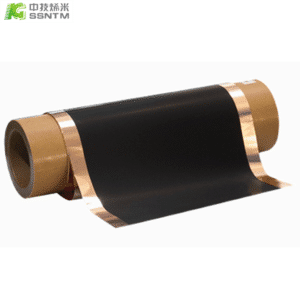Cylindrical battery cathode material
Cylindrical battery negative materials are roughly divided into six types: carbon negative materials, alloy negative materials, tin-based negative materials, lithium transition metal nitride negative materials, nanoscale materials, nano-anode materials.
· Carbon nanoscale materials Negative electrode materials: At present, the negative electrode materials that have been actually used in lithium-ion batteries are basically carbon materials, such as artificial graphite, natural graphite, mesophase carbon microspheres, petroleum coke, carbon fiber, pyrolytic resin carbon, etc.
· Alloy anode materials: including tin base alloy, silicon base alloy, germanium base alloy, aluminum base alloy, antimony base alloy, magnesium base alloy and other alloys, there are no commercial products at present.
· Tin-based negative electrode materials: tin-based negative electrode materials can be divided into tin oxides and tin composite oxides. Oxides refer to oxides of various valence metal tin. There are currently no commercial products.
· Lithium transition metal nitride anode materials, currently there are no commercial products.
· Nano-scale materials: carbon nanotubes, nano-alloy materials.
· Nano-anode material: nano-oxide material

Cylindrical battery negative collector carbon coated copper foil
Cylindrical battery negative collector carbon coated copper foil
Surface modification of battery collector using functional coatings is a breakthrough technological innovation.The modified copper foil is a functional layer which is coated on the surface of copper foil with a variety of conductive materials or one of them,forming a fine two
dimensional or multidimensional conductive network structure, and then collocating the conductive resin suitable for water system.Through the combination of theoretical simulation calculation and many experiments the optimal ratio structure and process strip are found out.Piece.The process can make the coating thickness thinner the coating resistance lower and the adhesion ability stronger in order to effectively improve the electrochemical performance and product stability of lithium battery especially for silicon carbon battery system.
Advantage:
Improve the surface tension, and increase the adhesion between the Cu foil and the active material.
Reduce the amount of binder in the electrode, increase the energy density and cycle life of the battery.
Protect the Cu current collector, Prevent corrosion and oxidation of copper foil surface..
Reduce interface resistance and reduce battery internal resistance.
Decrease polarization and improve the rate capability and specific capacity of the electrode material.
Mitigate exothermal reactions and enhance the battery safety.
Improve the production stability and reproducibility, and raise the pass rate of the cell;Increase the consistency and cycling life of the cell, and lower the cost of the production.
Application:
Lithium-ion batteries for electric vehicles and energy storage(Si/C).
Lithium-ion batteries for 3C productions (Si/C).
Lithium ion battery in water system.

